How much does NHS Wales spend?
- Published
So how much does the NHS Wales spend?
In 2011/12, £6,379m was spent on health in Wales.
The seven local health boards spent the biggest chunk.
They are responsible for both funding and providing NHS services in their geographical area.
In the 2011/12 financial year, they were given £6,013m by the Welsh government to do that.

NHS finances - the workforce
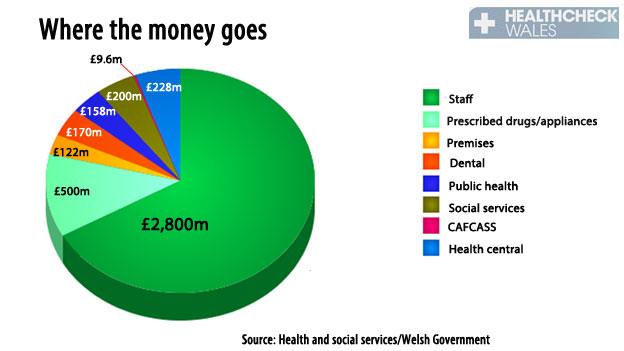
As we can see from the pie chart above, most of the money is spent on staff - the various grades of nurses, doctors, consultants and administrative teams.
In 2013 there were the equivalent of 72,393 full-time jobs in the NHS in Wales.
This was an increase of 391 (0.5%) on the previous year.
The biggest increases were in medical and dental staff - a rise of 2.8% compared with 2012.
The table below shows the changes in staffing levels over a five-year period to 2013.
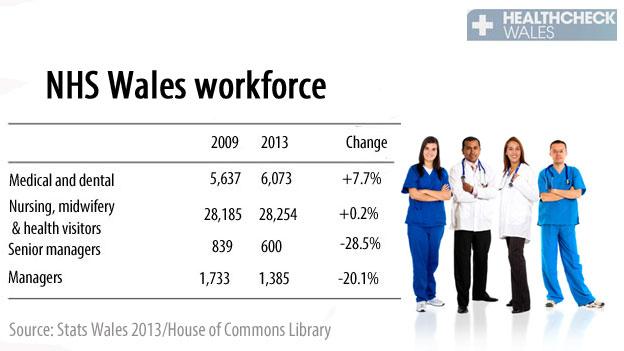
Excluding GPs and dentists, there are the equivalent of 36,312 people working full time in NHS Wales.
What is significant is the reduction in the number of managers and senior managers since 2009. In particular, a 28.5% reduction in senior staff.
Here you can also see a breakdown of local health board staff in your area. , external

NHS finances - spending money locally
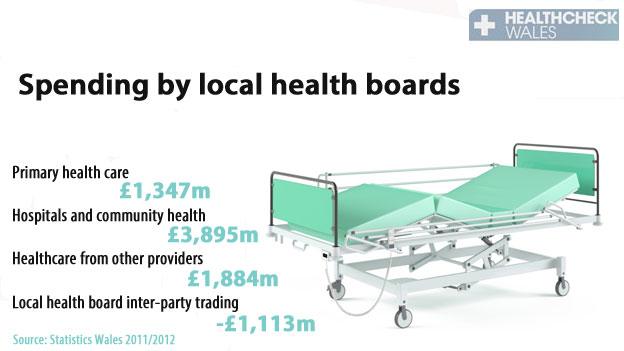
Primary healthcare in Wales has an annual budget of £1,347m.
That pays for GPs, their teams of nurses and administrative support as well as prescribed drugs, pharmacies and other services.
The proportion spent on each service varies for each health board.

Case study: Abertawe Bro Morgannwg University health board
Let's look how, for instance, the health board covering Bridgend, Neath Port Talbot and Swansea spends its money.
As well looking after local hospitals, it has £232.7m to spend on primary healthcare alone and we can show how that breaks down.

The largest amount goes on prescribed drugs and appliances, followed by general medical services - which covers GPs and their staff.
There is much discussion about patients' access to local doctors. In Wales there are broadly six GPs for every 10,000 people, similar to England and Northern Ireland.
But in Scotland, it is notably higher with eight per 10,000 (Stats Wales/House of Commons Library, 2013).

What do illnesses cost to treat?
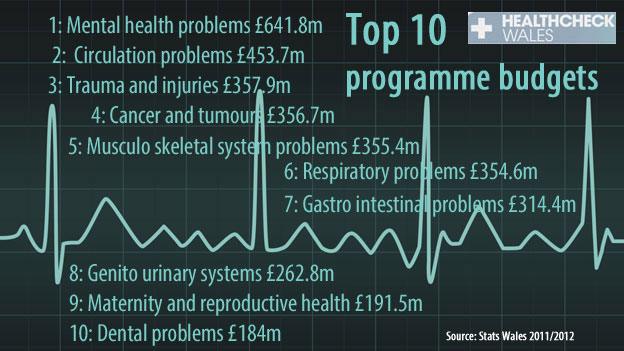
This shows the top 10 conditions by amount spent in the health service
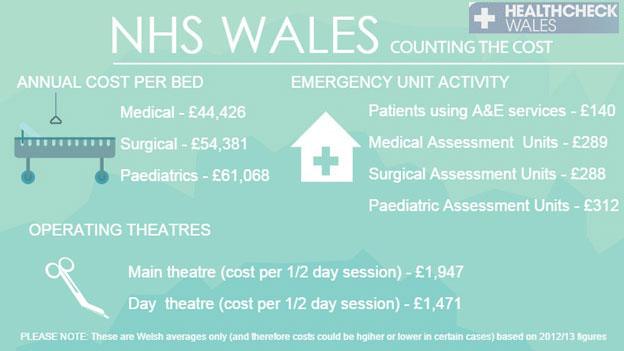
This shows the cost of beds and the average cost per patient visit

The debate about spending priorities in healthcare is a very complicated one and individual spending categories cannot really be looked at in isolation.
Even if we had not been rocked by the global financial crisis of 2008 and the policies of austerity that followed, the health service would still have had to consider its priorities.
Costs for services and pharmaceuticals would have increased as would patient demands and population growth.
The fact that we are still trying to recover from a recession - and have increasing social pressures - heightens discussion about the health service we want for the future.